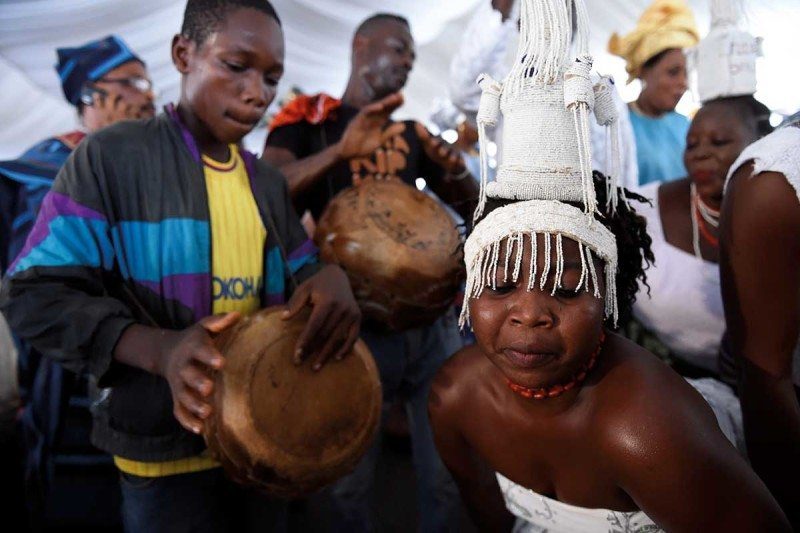
© Pius Utomi Ekpei/AFP/Getty ImagesThe majority of Yoruba people live in Nigeria
Some of us carry mysterious genes that may belong to another species of early human. The finding in people from West Africa hints that primitive hominins lingered in Africa until fairly recently.
Our species has repeatedly interbred with other hominins, in particular with the Neanderthals and a less well-known species called the Denisovans. This happened after some members of our species first left our African homeland, probably within the last 100,000 years. As a result, all people whose recent descent is
non-African carry some Neanderthal DNA, and some Asian people also have Denisovan DNA.But it is hard to spot if people whose ancestors never left Africa also carry DNA from other species. We don't have DNA from any extinct African hominins to compare because the hot and wet climate there tends to destroy preserved DNA.
To get around this problem, Arun Durvasula and Sriram Sankararaman at the University of California, Los Angeles,
devised a statistical method to identify out-of-place DNA, without needing to know the genome of the hominin it came from. The model correctly identified the known Neanderthal DNA in human genomes.
"On average, 8 per cent of the genomes of tested Yoruba people was from an archaic population"
The pair applied it to 50 Yoruba people from West Africa, who had had their DNA sequenced for the 1000 Genomes Project. On average, 8 per cent of their genome was from an archaic population.
The mystery DNA wasn't Neanderthal, and didn't match modern pygmies, who might plausibly have interbred with the Yoruba (
bioRxiv,
doi.org/cmzh).
It appears that the ancestors of
modern Yoruba interbred with members of a distinct population, but it's not clear what this "ghost lineage" was. It might have been a group of Homo sapiens that remained isolated from the rest of the population for thousands of years, or it may have been another hominin species altogether.
As with the Neanderthal interbreeding, many of the archaic gene variants in the Yoruba have been strongly selected against -
suggesting that the hybrid children from these mysterious matings were only just viable. However, some parts of the Yoruba genome, notably a tumour suppressor gene, still carry archaic DNA -
hinting that these fragments were advantageous.So who did the Yoruba's ancestors interbreed with? The
Neanderthals and Denisovans aren't in the frame because there is no record of them living in Africa. The recently discovered Homo naledi was present in South Africa about 250,000 years ago, so it overlapped with our species, but it seems unlikely humans would have mated with them. Their brains were smaller than ours, and they may have been too different from us to breed successfully. "I would be amazed if there was anything of them in us," says Mark Thomas of University College London.
A better candidate is Homo heidelbergensis, which was present in Africa until some 200,000 years ago. It was a fairly big-brained, advanced hominin, and has been proposed as the common ancestor of modern humans and Neanderthals. A small population of H. heidelbergensis may have lived on in the forests of West Africa until relatively recently, suggests Eleanor Scerri at the University of Oxford.
There is also archaeological evidence that relatively primitive hominins lingered in West Africa, isolated and evolving, after fully modern humans had emerged elsewhere.
This article appeared in print under the headline "African DNA hints at mystery hominin species"
Comment: See also:
- Pacific Islanders may have DNA of unknown human species
- Research shows ancient humans had sex with non humans - 'ghost species'
- 100,000 year old skulls may belong to elusive Denisovans
- Elongated Peruvian skulls DNA tested: Not human?
- Mystery human species emerges from Denisovan genome
There's a lot of misleading nonsense in this article. The reader is advised to check out Wolpoff's and Caspari's book: Race and Human Evolution: A Fatal Attraction.